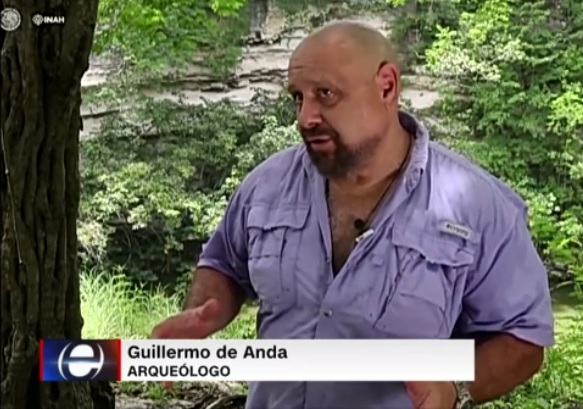In February 2018, a group of archaeologists in Mexico began to excavate a secret tunnel that is believed to lead to the underground part of a pyramid built by the ancient Maya.
The tunnel was closed by the Maya centuries ago but archaeologists plan to clear it in order to reach a hidden cenote that leads to a submarine cavern that was fundamental used for rituals related to Maya spirituality.
So important were these sites to their beliefs, that they used them for human sacrifices: the Maya used to honor the depths of this cenote with human lives, hoping to win the favor of Chac, god of rain.
“For the Maya, the cenotes were the entrance to the underworld” explained Guillermo de Anda, the underwater archaeologist that leads the Maya Great Aquifer project team.
“The Maya conceived the cosmos in three basic layers: heavens, earth and underground world.
The underworld was very important for them: it was considered the origin of life and if the Maya did not maintain a good balance between this layer of the universe and their own, that could mean drought, hunger or disease so they knew that they had to maintain peace with their deities of the underworld and this is the reason why they sometimes made this generous offerings”.
Centuries before the Spanish arrived in Mexico in the sixteenth century, the Maya were one of the largest civilizations in the world. The city of Chichen Itza, in the state of Yucatan and from which only ruins remain, is one of its most impressive achievements.
Chichén Itzá has four visible cenotes, but two years ago, Mexican scientist René Chávez Segura determined that there is another underwater cave hidden under El Castillo, a place that has never been seen by archaeologists.
Now, the team has discovered the largest underwater archaeological site in the world, this was officially announced in January, the hidden cenote is the main entrance to the whole underwater cave system.
On November 2017, his group explored two underground corridors that started in a smaller pyramid within Chichen Itza, known as the Ossuary. Archaeologists expected the corridors to take them underneath El Castillo, but discovered that the Maya had intentionally sealed them with piles of stones.
The team is returning to the tunnels with the objective of clearing them in order to find an entrance that leads to the cenote under El Castillo. De Anda believes that the excavation will take about three months to complete.
The existance of cenotes to the north, east, south and west of El Castillo is well known. What, according to de Anda, reveals that the pattern of settlement is directly related to sacred natural geography.
In fact, he believes that the cenote under El Castillo could represent a fifth direction: the “axis mundi” or center of the world, which the Maya described as a huge tree, known as The Tree of Life. And, also, it could give more clues about ancient Maya beliefs.
De Anda also explained that there is still much to learn about the role of human sacrifice in Maya culture.
In the past, this researcher analyzed the bones of the human sacrifices found in the Sacred Cenote of Chichén Itzá and discovered that about 80% of the victims were children between 3 and 11 years old.
“Sometimes it is difficult to understand why they sacrificed children, but we must stop and think about the state of health of these children. They represented a very low stratum of society, maybe children stolen from other communities for sacrifice” he explained.
De Anda said that the analysis of the skulls, bones and teeth of the children revealed that they had poor health, showing signs of anemia and malnutrition.
“There is a possibility that they were already dead when they were deposited in the cenote, and perhaps they were honored by putting them there, or maybe they were trying to send their spirit to send a message to the water gods,” he continued.
De Anda concluded: “We still have a lot to learn from the ancient Maya”.
Source: cnnespanol.cnn.com




